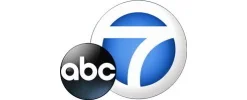Drug sponsors face a long and winding path to take a drug from discovery to market.
The Investigational New Drug Application or IND is a key step in this journey. The IND application is the process by which a new drug sponsor must receive approval from the Food and Drug Administration (FDA) to begin clinical testing on human subjects. IND approval also serves an important legal function in permitting sponsors to transport an investigational new drug across state lines for clinical trials. The IND approval process is rigorous and for good reason. Human safety and lives are at stake. Effectively navigating the IND application process requires early preparation and securing the right expertise when needed. Here, we’ll look at the process in more detail:
When do you need an IND?
An IND is required for any clinical investigation that involves administering a drug or biologic to humans and that is not exempt from IND requirements. A drug generally includes any article that is intended for the “diagnosis, cure, mitigation, treatment, or prevention of disease” and is also intended to “affect the structure or any function of the body.” Supplements and food products can be considered a “drug” if they are used in an unconventional way to affect, cure, mitigate, or prevent a disease by affecting a structure or function of the body. Biological products also require IND approval and include, among other products, cytokines, monoclonal antibodies, growth factors, gene therapy products, allergenic extracts, and bacterial vaccines. Exemptions to the IND requirements include certain research with already approved drugs where there is no intent to use the investigation to support a new indication, no significant labeling changes, and no significant change in advertising. Exemptions also apply for studies to compare unapproved generic versions of a drug with approved drugs and for human research studies involving radioactive or cold isotopes. Dietary supplements are generally not considered a drug and fall outside of the IND requirements.
The IND Process
The review and approval process is overseen by the FDA’s Center for Drug Evaluation and Research (CDER) and Center for Biologics Evaluation and Research (CBER), depending on whether the product is a drug or biologic. While the FDA distinguishes between commercial IND’s and those sought solely for research purposes, the same requirements apply equally to both categories of applicants. The IND application requires sponsors to provide information on three broad fronts, including:
- Animal Toxicology and Pharmacology Studies—Preclinical data from animal studies that indicate the drug is reasonably safe for testing in humans. This may also include other experience with the drug in humans (i.e. foreign use).
- Chemistry, Manufacturing, and Controls (CMCs)—Information that ensures the sponsor company can produce and supply the drug to market with consistency.
- Proposed Clinical Study Protocols and Investigator Information—Detailed clinical study protocols, information on the qualifications of the investigator who will oversee the clinical trial, and assurances to obtain informed consent from research subjects and to obtain the study’s review by an appropriate institutional review board (IRB).
Once the IND is submitted, the FDA has 30 days to either approve the product for clinical trials or otherwise place the IND on a “clinical hold.” If the study is placed on hold, the sponsor must suspend the proposed clinical trials to address potential issues. The IND application must then be re-submitted and the review process starts over again. Once IND approval is received from the FDA, the sponsor can begin testing with human participants. Clinical testing occurs in three distinct phases: Phase 1 testing is conducted on a small number (20-80) of healthy participants to determine the basic pharmacological and toxicological effects of the drug on humans. Phase 2 testing is administered to a larger group of patients (100-300) with the disease or condition that is targeted by the new drug. A key focus of this phase is to determine the drug’s effectiveness, side effects, and its optimal dosage and administration. Phase 3 testing involves testing the drug against a placebo with a larger number of participants (up to 3,000) from the patient population for which the drug is to be used. Phase 3 testing is typically carried out over a longer time period to establish a larger body of clinical evidence and to assess labeling concerns. Importantly, data gathered during Phase 3 studies inform the FDA’s ultimate risk-benefit analysis in the New Drug Application (NDA) approval process. The clinical trial process continues until the sponsor decides to end the trials or files a new drug marketing application (NDA) to take the drug to market. A successful NDA will heavily depend on a well-designed clinical trial that ensures the study reaches clinical endpoints. Knowledgeable planning of the clinical trials can also reduce the risk of a clinical hold during trials, as the FDA can issue a clinical hold at any stage of the clinical trial process if concerns arise as to the safety or efficacy of the drug, the adequacy of clinical protocols, or CMCs. At Crowley Law LLC, we work with a network of highly experienced contract research organizations who are experts at planning and conducting clinical trials to maximize NDA success.
Common IND Application Problems and How to Avoid Them
Setbacks at the IND application stage are often costly and can significantly delay getting a product to market. Yet aside from simply having a poor study design, many IND application problems can be avoided with thoughtful evaluation and planning. Let’s take a look at the most common reasons that clinical trials are delayed. 1) Poorly Written and Organized Materials The FDA receives hundreds of original INDs each year—reviewers have little time to waste. It is incumbent upon applicants to make sure their application is well-organized, clear, and to the point. Your application should include relevant and adequate data to support clinical protocols, labeling claims, and safety assurances. At the same time, too much data that has little direct relevance to your proposed study can make it cumbersome and time-consuming to sort and make sense of your application package. When writing your IND, keep in mind how your application can best be streamlined to ease the job of reviewers. 2) Technical and Grammar Mistakes Since May of 2018, the FDA has required all commercial INDs to be submitted through its Electronic Common Technical Document (eCTD) portal. Sponsors who are unfamiliar with the FDA’s electronic submission process often make inadvertent mistakes that can cause their application to be rejected. These can include things like formatting errors or failing to include required documents. It’s also important to carefully review your submission for grammar, spelling, and formatting mistakes. This will make your reviewer’s job easier and ultimately increase your odds of success. 3) Not Seeking FDA Guidance The FDA recognizes that the IND process can be daunting, especially for smaller companies with limited resources and experience with the IND process. In such cases, the FDA highly encourages sponsors to take advantage of its Pre-IND Consultation Program. The program allows new drug sponsors to request early dialogue with the FDA and is a key first step in establishing your reputation and communication channels with the agency. More specifically, the Pre-IND meeting can help a sponsor verify that it is using the appropriate animal model to determine product safety, that toxicology data supports clinical trials, and to discuss specific roadblocks or data concerns. The Pre-IND meeting can be especially helpful in situations where a drug is new, has a novel indication, or treats a life-threatening or serious disease. The Pre-IND meeting is also important where the sponsor is new to drug development or has particular questions for which there is little existing FDA guidance. Existing FDA guidance and instructions should be thoroughly consulted before seeking a pre-consultation meeting to ensure the meeting is necessary and that meeting time is well-used.
Getting the Most Out of Your Pre-IND Meeting
Pre-IND Meeting Request Sponsors must file a formal request to schedule a Pre-IND meeting. Meetings are typically scheduled within 60 days of the request. To facilitate meeting outcomes, FDA guidance suggests that the meeting request include the following information:
- The meeting objectives and a proposed agenda
- A list of specific questions categorized by discipline
- Proposed sponsor and FDA participants
- Proposed meeting date (usually 6-8 weeks out)
- When the background packet will be submitted (at least 4 weeks from the meeting date)
- Information about the quantitative composition of the drug, proposed indication, and dosing regimen
Preparing the Pre-IND Meeting Packet The Pre-IND meeting is the first time the FDA will have eyes on your study. It serves as a preliminary test run for how your IND will be received by the agency. As such, your pre-meeting packet must provide adequate information to inform the FDA’s feedback. Along with an overall program synopsis, your pre-meeting packet should include industry data, CMCs, and information about the IND product characteristics, including animal testing and toxicology data. The FDA also requests that you include a copy of the initial meeting request with current and updated information. Preparing for Your Pre-IND Meeting Sponsors should strive for total transparency and full disclosure throughout the Pre-IND meeting process. This will help to both improve meeting outcomes and establish your credibility with the agency. And credibility with the agency is essential for your success. Ultimately, the focus of the Pre-IND meeting is to expose your scientific data in a neutral way and get FDA feedback on their specific concerns. Ask good questions and listen to the FDA’s response. An experienced consultant can help you prepare so you get the most out of your Pre-IND meeting. Navigating the FDA approval process for new drug therapies can be difficult and time-consuming. The IND application process is a tremendous investment in time and resources and requires careful and informed planning. A skilled and experienced attorney who has an understanding of the FDA and how to navigate the application and review processes can help streamline the IND application process. Crowley Law LLC is a full-service law firm for tech and life science companies. Contact us for a consultation on how we can best assist you in the application process and ensure you have the greatest legal advantage moving forward.








